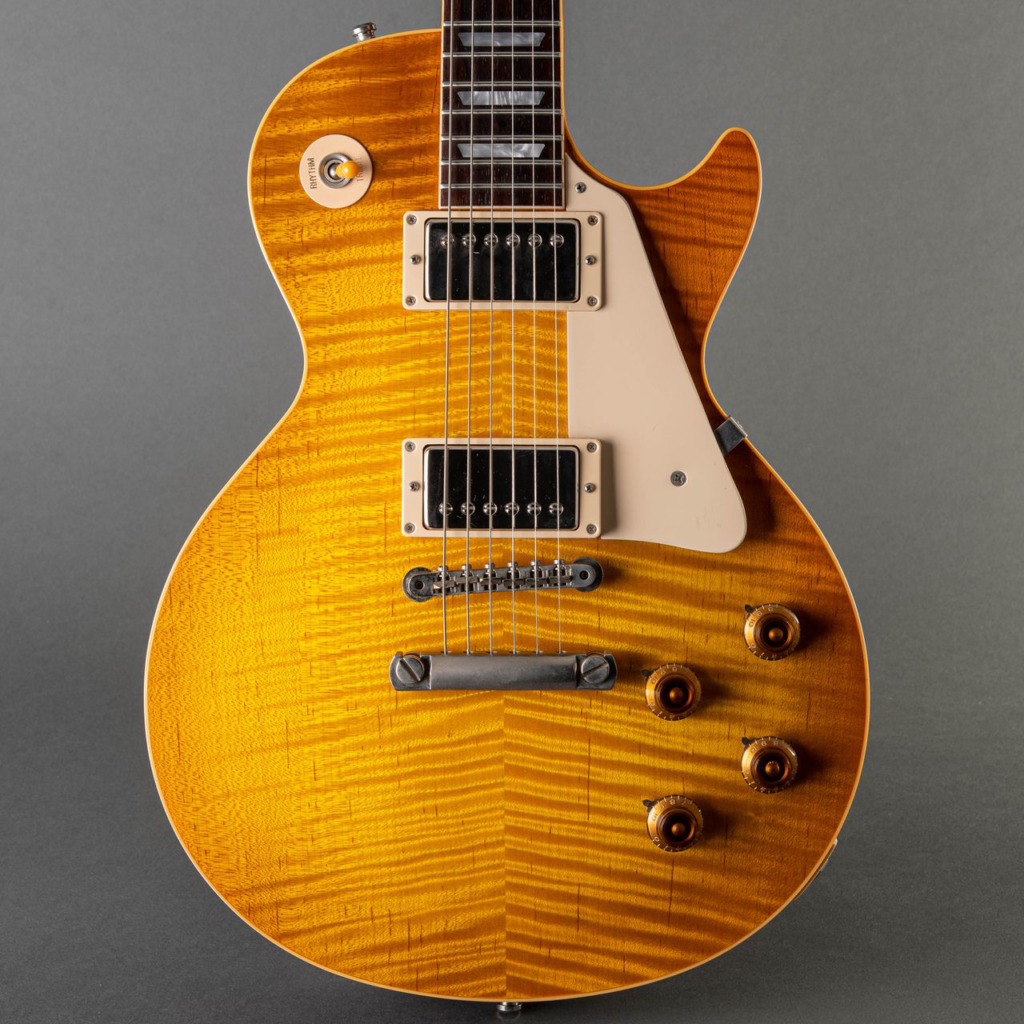The History of the Gibson Les Paul Guitar
The Gibson Les Paul is one of the most iconic and revered guitars in the history of music. Renowned for its rich tone, sustain, and versatility, the Les Paul has been a staple instrument for countless legendary musicians across a variety of genres. This essay delves into the rich history of the Gibson Les Paul, tracing its origins, development, and cultural impact. Whether you’re a seasoned player or just starting lessons at Los Feliz Guitar Lessons, understanding the story behind the Les Paul guitar provides a deeper appreciation for this legendary instrument.
Origins and Creation
The story of the Gibson Les Paul begins in the early 1950s. Gibson, a leading manufacturer of acoustic instruments, sought to enter the burgeoning electric guitar market dominated by Fender’s Telecaster. To compete, Gibson needed a solid body electric guitar that could appeal to professional musicians.
In 1951, Gibson enlisted the help of guitarist and inventor Les Paul, a pioneer in the development of electric guitar technology. Les Paul had been experimenting with solid body guitar designs since the early 1940s, creating his own prototype called “The Log,” which was essentially a wooden plank with a pickup. His innovative ideas and technical expertise made him an ideal collaborator for Gibson.
In 1952, Gibson introduced the first Les Paul model, which featured a single-cutaway, solid mahogany body with a maple top, a set-in mahogany neck, and two P-90 single-coil pickups. The guitar’s design combined elegance with functionality, offering a richer, warmer tone compared to its competitors. The Les Paul’s signature sunburst finish and trapezoid inlays became instantly recognizable features.
Evolution and Refinement
The original Les Paul underwent several changes and refinements throughout the 1950s. In 1953, Gibson introduced the Les Paul Custom, a deluxe version with a sleek black finish and gold hardware, often referred to as the “Black Beauty.” This model featured an ebony fingerboard and multiple binding layers, giving it a luxurious appearance and enhanced playability.
In 1954, the Les Paul Junior and Les Paul Special were introduced as more affordable options. These models had simpler designs, with single P-90 pickups and flat tops, making them accessible to a broader range of musicians.
The most significant changes came in 1957, when Gibson replaced the P-90 pickups with the newly developed humbucker pickups, designed by Seth Lover. These humbucking pickups, known for their warm, powerful tone and reduced hum, became a defining characteristic of the Les Paul. This innovation marked the transition to the Les Paul Standard model, which remains one of the most sought-after guitars in the world.
The Decline and Resurrection
Despite its initial success, the Les Paul faced declining sales in the late 1950s. In 1960, Gibson introduced the Les Paul SG (Solid Guitar), a lighter and more affordable model with a double-cutaway body and sharper contours. The SG was initially branded as the new Les Paul model, but Les Paul himself was not involved in its design and requested that his name be removed from the model. As a result, the Les Paul Standard was discontinued in 1961.
However, the Les Paul’s story was far from over. In the mid-1960s, guitarists like Eric Clapton, Mike Bloomfield, and Peter Green discovered the rich, sustaining tones of the late 1950s Les Paul models and began using them in their recordings. This resurgence in popularity led to increased demand for the original Les Paul design.
In response, Gibson reissued the Les Paul Standard in 1968, closely replicating the features of the 1958-1960 models. This reissue marked the beginning of a new era for the Les Paul, solidifying its place in the annals of rock history.
Cultural Impact and Iconic Players
The Gibson Les Paul has been embraced by some of the most influential guitarists in music history. Its powerful sound and versatility have made it a favorite in genres ranging from rock and blues to jazz and heavy metal.
Jimmy Page, the legendary guitarist of Led Zeppelin, is perhaps one of the most famous Les Paul players. Page’s use of the Les Paul on classic tracks like “Stairway to Heaven” and “Whole Lotta Love” showcased the guitar’s ability to produce both delicate, melodic tones and roaring, overdriven sounds.
Slash of Guns N’ Roses is another iconic Les Paul player. His riffs and solos on songs like “Sweet Child o’ Mine” and “November Rain” helped define the sound of 1980s and 1990s rock. Slash’s signature top hat and sunburst Les Paul have become synonymous with rock ‘n’ roll imagery.
Joe Perry of Aerosmith, Billy Gibbons of ZZ Top, and Duane Allman of The Allman Brothers Band are also notable players who have cemented the Les Paul’s reputation as a guitar of choice for serious musicians.
Modern Developments and Innovations
Gibson has continued to innovate and expand the Les Paul line to meet the demands of contemporary musicians. Modern Les Paul models feature advancements such as weight relief chambers to reduce the guitar’s overall weight, coil-splitting capabilities for a wider range of tones, and improved hardware for greater tuning stability and playability.
In addition to the traditional Les Paul Standard, Gibson offers a variety of models to suit different playing styles and budgets, from the high-end Custom Shop recreations to the more affordable Epiphone Les Pauls. These options ensure that the Les Paul remains accessible to guitarists at all levels, including those taking Los Feliz guitar lessons who are just beginning their musical journey.
Conclusion
The history of the Gibson Les Paul is a testament to its enduring appeal and influence in the world of music. From its innovative beginnings with Les Paul himself to its resurgence in the hands of rock legends, the Les Paul has proven to be a versatile and beloved instrument. Its rich tone, sustain, and iconic design continue to inspire new generations of musicians, whether they are playing on the world’s biggest stages or taking guitar lessons in a local studio. As the Les Paul evolves with new innovations and models, its legacy as one of the greatest guitars ever made remains firmly intact.

